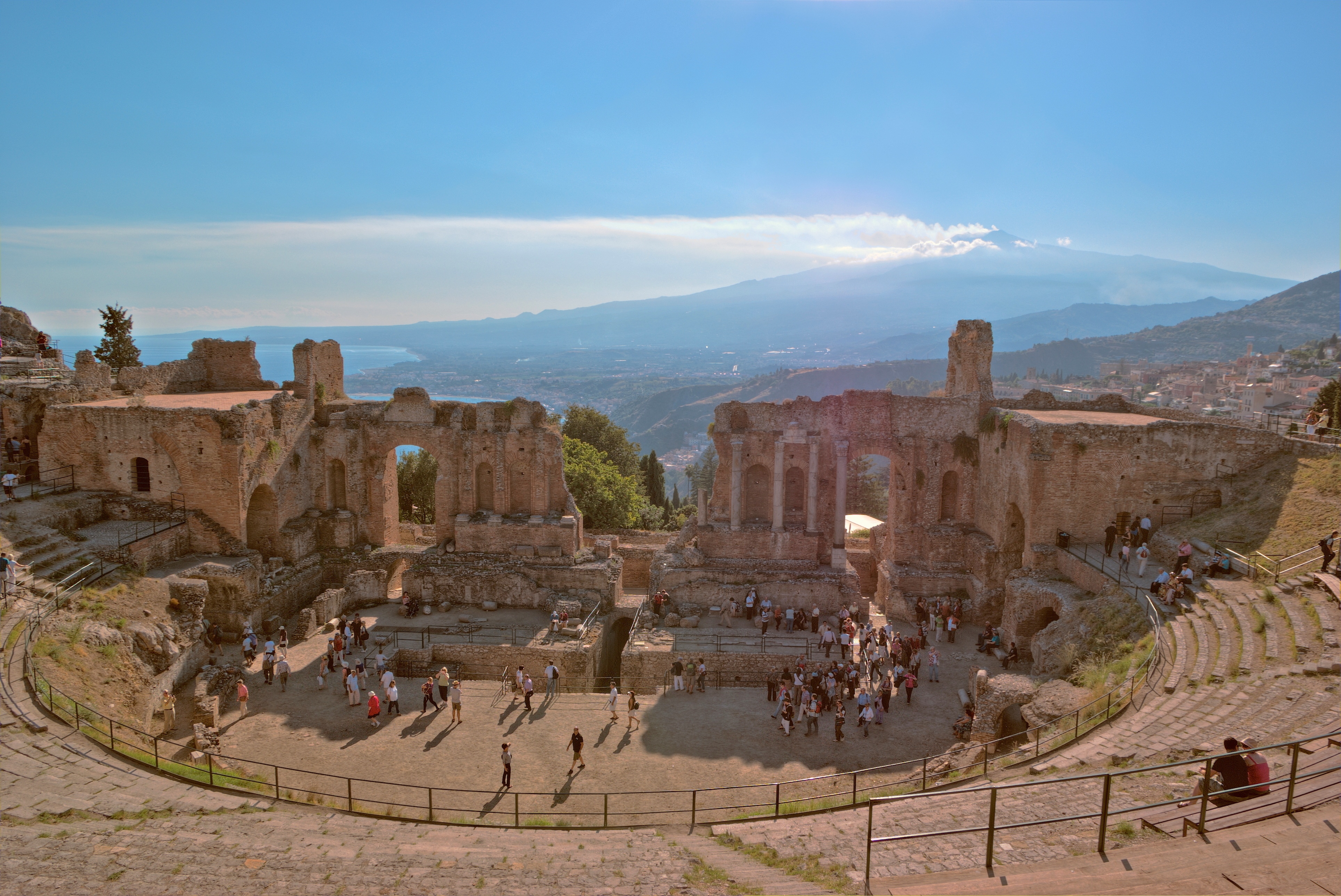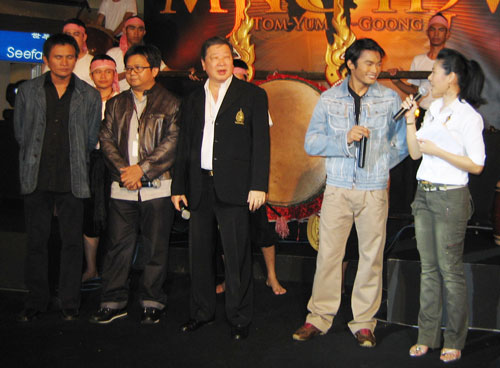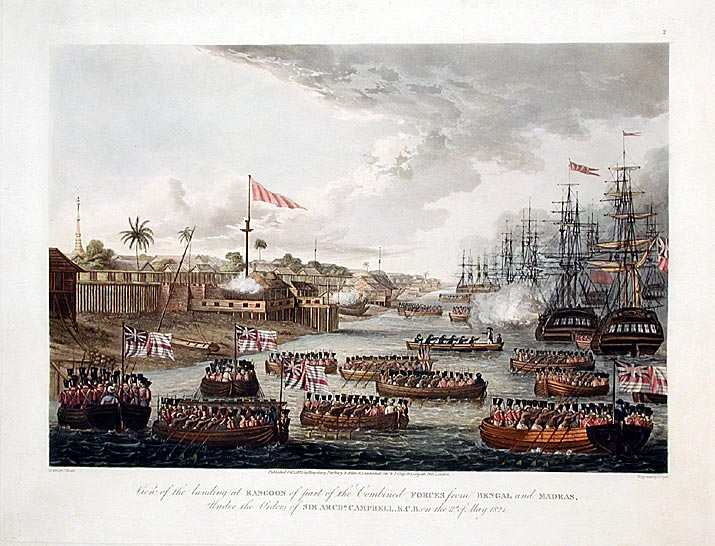|
Sala Chaloem Thai
Sala Chaloem Thai ( th, ศาลาเฉลิมไทย, ), abbreviated as Chaloem Thai (), was a former movie theatre in Bangkok, located at the corner of Ratchadamnoen Avenue and Mahachai Road near the Fort Mahakan, opposite what is now the Queen Sirikit Gallery. This movie theatre was built in the year 1940 in the era of Field Marshal Plaek Phibunsongkhram to be another national theatre in Thailand as well as Sala Chalermkrung Royal Theatre in Wang Burapha neighbourhood. The red building's distinctive post-modern architecture was designed to harmonize with the surrounding buildings on Ratchadamnoen Avenue. The official opening ceremony took place on February 10, 1949. Sala Chaloem Thai was once considered one of the most popular and modern movie theatres. It was dismantled in early 1989 as a result of a cabinet resolution, because it obscured the scenery of Wat Ratchanadda and Loha Prasat. All projectors and seats were handed over to the National Film Archive. The sit ... [...More Info...] [...Related Items...] OR: [Wikipedia] [Google] [Baidu] |
Wat Ratchanadda
Wat Ratchanatdaram ( th, วัดราชนัดดาราม, ) is a buddhist temple (wat) located at the intersection between Ratchadamnoen Klang and Maha Chai Road, in Phra Nakhon district, Bangkok. Meaning ''Temple of the Royal Niece'', the temple was built to the order of King Nangklao (Rama III) for his granddaughter, Princess Somanass Waddhanawathy in 1846. Loha Prasat Loha Prasat, which means iron castle or iron monastery (โลหะปราสาท), is composed of five towers, of which the outer, middle and the center towers contain large black iron spires. The 37 virtues that are required to reach enlightenment are signified by 37 golden spires. The multi-tiered structure consists of 3 levels, the bottom one has 24 spires, the middle one 12 and the top level has 1 spire. There were two other similar structures which previously existed in the world. Modelled after the earlier ones in India and Anuradhapura, Sri Lanka Sri Lanka (, ; si, ශ්&zw ... [...More Info...] [...Related Items...] OR: [Wikipedia] [Google] [Baidu] |
1949 Establishments In Thailand
Events January * January 1 – A United Nations-sponsored ceasefire brings an end to the Indo-Pakistani War of 1947. The war results in a stalemate and the division of Kashmir, which still continues as of 2022. * January 2 – Luis Muñoz Marín becomes the first democratically elected Governor of Puerto Rico. * January 11 – The first "networked" television broadcasts take place, as KDKA-TV in Pittsburgh, Pennsylvania goes on the air, connecting east coast and mid-west programming in the United States. * January 16 – Şemsettin Günaltay forms the new government of Turkey. It is the 18th government, last single party government of the Republican People's Party. * January 17 – The first VW Type 1 to arrive in the United States, a 1948 model, is brought to New York by Dutch businessman Ben Pon. Unable to interest dealers or importers in the Volkswagen, Pon sells the sample car to pay his travel expenses. Only two 1949 models are sold in ... [...More Info...] [...Related Items...] OR: [Wikipedia] [Google] [Baidu] |
Theatres Completed In 1949
Theatre or theater is a collaborative form of performing art that uses live performers, usually actors or actresses, to present the experience of a real or imagined event before a live audience in a specific place, often a stage. The performers may communicate this experience to the audience through combinations of gesture, speech, song, music, and dance. Elements of art, such as painted scenery and stagecraft such as lighting are used to enhance the physicality, presence and immediacy of the experience. The specific place of the performance is also named by the word "theatre" as derived from the Ancient Greek θέατρον (théatron, "a place for viewing"), itself from θεάομαι (theáomai, "to see", "to watch", "to observe"). Modern Western theatre comes, in large measure, from the theatre of ancient Greece, from which it borrows technical terminology, classification into genres, and many of its themes, stock characters, and plot elements. Theatre artist Patrice ... [...More Info...] [...Related Items...] OR: [Wikipedia] [Google] [Baidu] |
Theatres In Bangkok
Bangkok, the capital of Thailand, is one of the world's top tourist destination cities. Each year, approximately 22.7 million international visitors arrive in Bangkok. MasterCard ranked Bangkok as the world's top destination city (by international visitor arrivals in its Global Destination Cities Index), with 15.98 million projected visitors in 2013. It topped the MasterCard Global Destinations Cities Index as the most visited city in the world in 2012, 2013, 2016, 2017 and 2018. The city is ranked fourth in cross-border spending, with 14.3 billion dollars projected for 2013, after New York, London and Paris. Euromonitor International ranked Bangkok sixth in its Top City Destinations Ranking for 2011. Bangkok has also been named "World's Best City" by ''Travel + Leisure'' magazine's survey of its readers for four consecutive years since 2010. As the principal gateway for arriving visitors, Bangkok is visited by the majority of international tourists to the country. Domestic touris ... [...More Info...] [...Related Items...] OR: [Wikipedia] [Google] [Baidu] |
Former Cinemas
A former is an object, such as a template, gauge or cutting die, which is used to form something such as a boat's hull. Typically, a former gives shape to a structure that may have complex curvature. A former may become an integral part of the finished structure, as in an aircraft fuselage, or it may be removable, being using in the construction process and then discarded or re-used. Aircraft formers Formers are used in the construction of aircraft fuselage, of which a typical fuselage has a series from the nose to the empennage, typically perpendicular to the longitudinal axis of the aircraft. The primary purpose of formers is to establish the shape of the fuselage and reduce the column length of stringers to prevent instability. Formers are typically attached to longerons, which support the skin of the aircraft. The "former-and-longeron" technique (also called stations and stringers) was adopted from boat construction, and was typical of light aircraft built until the ... [...More Info...] [...Related Items...] OR: [Wikipedia] [Google] [Baidu] |
Cinemas In Thailand
Cinemas in Thailand are popular venues for entertainment. Especially in Bangkok, the movie theaters tend to be multiplex facilities offering many other forms of entertainment besides movies, such as bowling or karaoke, along with restaurants and small shops. The films playing in Thai cinemas are usually first-run Hollywood features, which tend to dominate the box-office scene. There is a burgeoning Thai film industry that is making dozens of films each year that are increasingly popular with local audiences. Films from other Asian countries, such as Korea, Japan and Hong Kong, are popular as well. The movie-theater business in Thailand is led by the Major Cineplex Group, which owns the Major Cineplex chain as well as the EGV chain and operates the Paragon Cineplex at Siam Paragon as well as Thailand's IMAX theaters. Behind the combined Major Cineplex-EGV, which has a 50 percent market share, the SF Group is the No. 2 operator, with a 35 percent share. Smaller chains include A ... [...More Info...] [...Related Items...] OR: [Wikipedia] [Google] [Baidu] |
Cinema Of Thailand
The cinema of Thailand dates back to the early days of filmmaking, when King Chulalongkorn's 1897 visit to Bern, Switzerland was recorded by François-Henri Lavancy-Clarke. The film was then brought to Bangkok, where it was exhibited. This sparked more interest in film by the Thai Royal Family and local businessmen, who brought in filmmaking equipment and started to exhibit foreign films. By the 1920s, a local film industry was started and in the 1930s, the Thai film industry had its first "golden age", with a number of studios producing films. The years after the Second World War saw a resurgence of the industry, which used 16 mm film to produce hundreds of films, many of them hard-driving action films. The most notable action filmmaker in the 1970s was Chalong Pakdivijit. Known internationally as P. Chalong or Philip Chalong, Chalong became the first Thai director who could successfully break into the international market and made a profit with his 1973 action-packed fil ... [...More Info...] [...Related Items...] OR: [Wikipedia] [Google] [Baidu] |
Rama III
Nangklao ( th, พระบาทสมเด็จพระนั่งเกล้าเจ้าอยู่หัว, ; 31 March 1788 – 2 April 1851), birth name Thap ( th, ทับ), also styled Rama III, was the third king of Siam under the House of Chakri, ruling from 21 July 1824 to 2 April 1851. Nangklao was the eldest surviving son of his predecessor, king Rama II. His mother Sri Sulalai was one of the king's secondary wives. Nangklao was likely designated as heir by his father, his accession was uncontested and smoothly confirmed by the grand council. Foreign observers, however, falsely perceived him as having usurped the prior claim of his half-brother Prince Mongkut, who was younger, but born to queen Sri Suriyendra and thus " legitimate" according to Western customs. Under the old concept of Thai monarchy, however, a proper king must emulate Maha Sammata in that he must be "elected by the people." Ironically, Prince Mongkut may have later contributed to ... [...More Info...] [...Related Items...] OR: [Wikipedia] [Google] [Baidu] |
Post-modern Architecture
Postmodern architecture is a style or movement which emerged in the 1960s as a reaction against the austerity, formality, and lack of variety of modern architecture, particularly in the international style advocated by Philip Johnson and Henry-Russell Hitchcock. The movement was introduced by the architect and urban planner Denise Scott Brown and architectural theorist Robert Venturi in their book ''Learning from Las Vegas''. The style flourished from the 1980s through the 1990s, particularly in the work of Scott Brown & Venturi, Philip Johnson, Charles Moore and Michael Graves. In the late 1990s, it divided into a multitude of new tendencies, including high-tech architecture, neo-futurism, new classical architecture and deconstructivism. However, some buildings built after this period are still considered post-modern. Origins Postmodern architecture emerged in the 1960s as a reaction against the perceived shortcomings of modern architecture, particularly its rigid doctrines, ... [...More Info...] [...Related Items...] OR: [Wikipedia] [Google] [Baidu] |
Wang Burapha
Wang Burapha ( th, วังบูรพา, ) is a historic neighbourhood in Bangkok, regarded as the first commercial district, commercial and entertainment district in contemporary Thailand (after Siamese revolution of 1932, 1932 revolution). It is situated between Charoen Krung Road, Charoen Krung, Maha Chai, Phahurat Road, Phahurat, Tri Phet Road, Tri Phet and Burapha roads, near the eastern edge of the old city centre of Rattanakosin Island in Wang Burapha Phirom Subdistrict, Phra Nakhon District. The neighbourhood is named after Buraphaphirom Palace, which used to be located here until the 1950s, when it was demolished to make way for commercial developments. The neighbourhood became a major commercial district and a centre of youth culture during the 1950s–60s. During its prosperous era, it was a venue for teenagers similar to Siam Square at present. This group of teenagers has been called ''"Koh Lang Wang"'' (โก๋หลังวัง), translate as "mobster behind ... [...More Info...] [...Related Items...] OR: [Wikipedia] [Google] [Baidu] |



.jpg)

.jpg)



